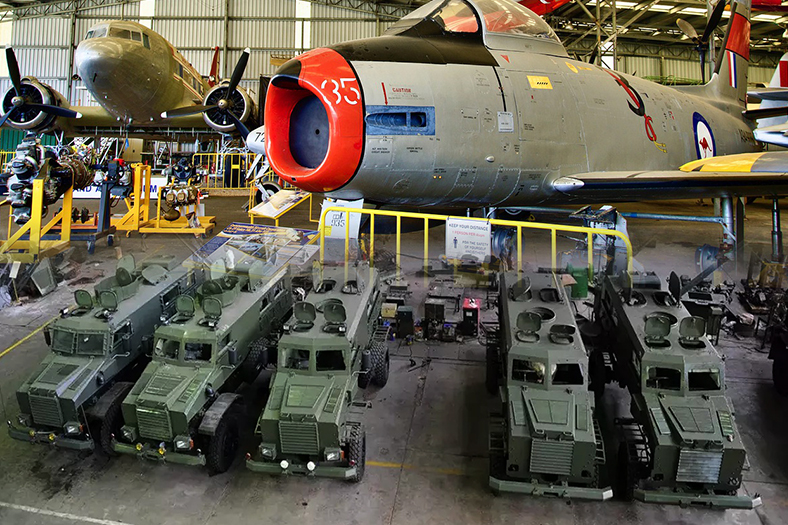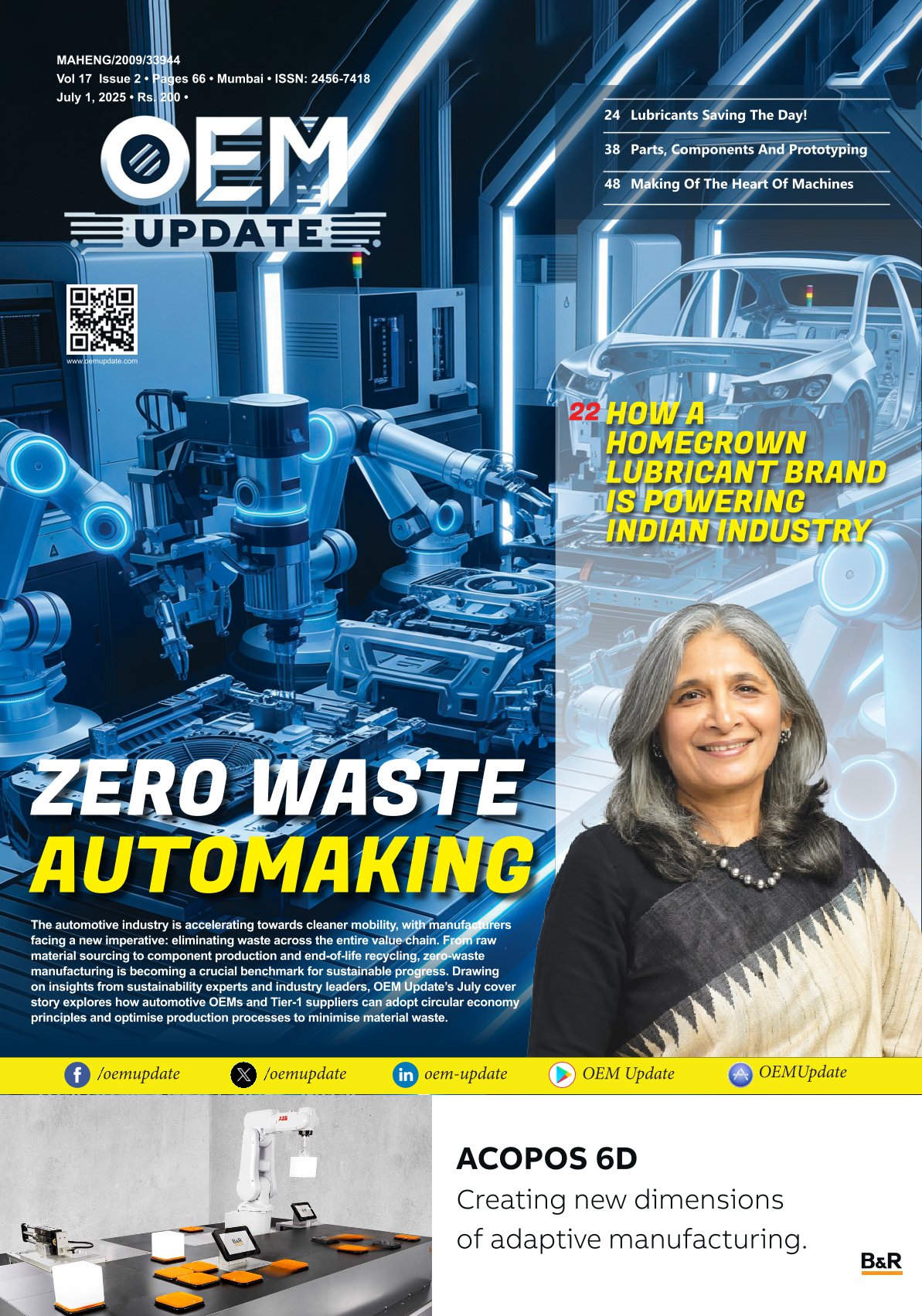Indian Manufacturing: Waiting For a Defence Push
By OEM Update Editorial April 2, 2021 8:06 am IST
Discussing the emerging opportunities and challenges in the defence manufacturing sector, industry experts highlight the manufacturing trends that can ease the manufacturing processes in different ways.
India’s defence manufacturing is a significant sector for Indian economy. India has been one of the top importers for defence equipment manufacturers. The Indian government has set the defence production target at US$ 25.00 billion by 2025 (including US$ 5 billion from exports by 2025).
Opportunities and Challenges in India’s defence manufacturing
India, as a base for manufacturing is gaining a lot of momentum. Defence sector definitely hold a strategic significance of a country that plays an important role in manufacturing. “When we talk about defence, the foremost thing we look at is the security aspect. We must also look at the defence manufacturing part where India has a calibre of going global”, says T K Ramesh, CEO, Micromatic Machine Tools, Ace Micromatic Group. Today, in manufacturing, almost every product is a developed as global product with a certain amount of localisation being added to suit the market demands.
Government’s push for vocal for local is bringing nationalism in existence in a way. Let’s not forget that even in localisation we need to understand that a product and a manufacturing process must attain a quality and should be designed for global requirement.
Talking about Vocal for Local, Utkarsh Landekar, Head – Laser Business (India and Exports), Messer Cutting Systems, mentions about Messer’s Coimbatore factory where they produce thermal cutting equipment, cutting equipment, plasma cutting oxyfuel and laser cutting equipment. It is modern plant and is digitally connected paperless factory. The factory aims at catering the local and global market demands by increasing exports. Being vocal for going global is more about localising indigenous products, wherein key technologies can still be imported and used in domestic made machines.
According to Manoj K S, Business Development Head – IQS Solutions, ZEISS Industrial Metrology, “Looking at today’s manufacturing trends, that there is an influx of FDA in the defence sector. Government is willing to promote MSMEs in defence manufacturing; additive manufacturing is another trend which can be seen in the MROs and defence units. With these developments, we seen an ecosystem being developed in Indian manufacturing, and ZEISS has always believed in creating local opportunities.” Being an international company in India, we make products in India, for both Indian and global requirement. As a measurement expert company, we understand the entire knowhow of machines, manufacturing speed, accuracy, time to deliver, time to market etc. So, we make in India for Indian requirements but with German standards.
With the government of India’s clarion on vocal for local to make India global, we are, in a way talking about ‘Make in India 2.0’. So, the entire idea is to upsurge the role of manufacturing in our country’s GDP from presently 16 percent to 25 percent, feels Rajesh Nath, President, VDMA. We must understand the essential aspects of our per capita income is roughly around $2,000. To increasing manufacturing in India, we must comprehend to the need for increasing the per capita income in India from $ 2000 to $ 5,000. “We must address ways to conceal this huge gap in per capita income so as to become a manufacturing hub and to increase localised manufacturing in India. India has a huge potential for exports and AtmaNirbhar Bharat is an opportunity to identify ring potential for export purposes”, Rajesh adds.
Investments in manufacturing
Rajesh highlights a few statistics on the level of technological acceptance in Indian manufacturing in India. The global robot sales façade is around 4,20,000 of which 2,40,000 robots are made in China where is only 5000 robots are made in India. This is a very huge gap. “There’s a dire need to combine technology and manpower to boost the number of robots and to have increased technological intervention in the manufacturing processes. The day we combine the two essential hands, we will be able to identify the difference in our manufacturing quality and processes. So, investments in technology and manpower are as vital as investments in other allied requirements for manufacturing.
On this note, Utkarsh says “When we look at the large projects coming in the defence manufacturing and general equipment manufacturing, we observed and realised that or conventional working patterns is allowing us to remain competitive. I have a different opinion sometimes. It’s always good to have conventional working style but that cannot be implemented or applied to all allied manufacturing. We need to get along with the ongoing trend so as to remain competitive and valued in the market.
Whereas, Ramesh feels that India is making a lot of investments in manufacturing, be it in defence, transportation or any other. A strong local market has enabled the world leaders to set up industries / manufacturing units in India. India being such a large market, we were all looking at making an India for India; but today India is aiming big by making in India for world. We must create a difference and must act upon making required changes in the industry.
Key takeaways
Various industries have been adapting and implementing technologies into their manufacturing processes. With the increase in technical interventions and high-speed internet services we have seen an increase in the numbers of start-ups in the MSME and manufacturing sector. Newer technologies must be implemented and upgraded consistently otherwise the companies will become obsolete.
Talking about the opportunities in laser cutting, we have a wide vision and we have set up a factory to manufacture the laser cutting machines in India, with the best of them know how available, and for Indian market as well as the export market and the product quality, that delivers the end result that will transform the way the manufacturing happens. “I see a lot of hopes happening at how the things will get implemented and the opportunities that are coming up, opportunities that will be there in any scenarios”, says Utkarsh.
Talking about the key pointers to note, Rajesh appreciate governments initiatives with AtmaNirbhar Bharat and the PLI scheme introduced during the union budget session 2021-22. “I believe companies can really benefit from manufacturing in India; also, the PLI scheme would act as an incentive with the global investments coming into India. Moreover, we are already witnessing the change in various markets.
Technical and skill development for industrial development
“We need to focus more on manufacturing in India for India and increasing exports for the world. We cannot achieve this have a short-term plan for three years of five years”, says Ramesh. The short-term plan will be applicable for existing manufacturing using existing technologies in local market and compare it with the exports. This is where the bigger companies are entering the Indian market. Adding and implementing a certain amount of localisation by SMEs, from the newly created SME chain will be working on the finale figures – this is from the defence perspective. If we are willing to increase the share of India’s defence exports, then it has to be bigger than the usual process for doing here and sending it outside.
Concluding the discussion, Rajesh explains the four R’s to considerReflect – Think about the present circumstance, and the existing and possible challenges in the present scenario
Resize – Look for ways to make optimum use of available tools to resize the organisational structure and make it better accessible in future
Rethink – We must look at the innovations, digital tools and consider using them in various ways. Creating unique ideas and implementing them to remain consistent and competent in the market that changes regularly.
Reimagine –Have a knowhow of the available tools and the relevant business opportunities.
The moment we start acting upon these R’s, I am confident that the Indian manufacturing industry will progress and the coming 2-3 years are going to be a good period. Indian economy already has a V shaped recovery. So, I feel the future projections are about growth of about 10 to 11 percent; and this can be achieved when the manufacturing sector also grows and contributes to the growth of the nation and the country.
Final Note
Over the last five years, India has consistently ranked amongst the top importers for defence equipmentto gain technological advantages over its competitive markets with countries like China among the others. To modernise its armed forces and reduce dependency over external dependence for defence procurement, several initiatives have been taken by the government to encourage ‘Make in India’ activities via policy support initiatives.
In future, we really would have to look at the possibility of combining automation and right steps towards it. It is not that like any company start to adopt industry 4.0, all aspects of industry 4.0 but you can certainly pick certain aspects like remote monitoring, condition monitoring, which can in a way also help the MSMEs because, if you are able to predict in time the breakdown of your machine through remote monitoring you would not suffer the machine going down plus you in fact, you can take certain steps from remote action. I think this is what the industry really needs to adopt in the future if we have to increase our manufacturing and if we have taken the right steps towards manufacturing.
T K Ramesh, CEO, Micromatic Machine Tools, Ace Micromatic Group
“We must also look at the defence manufacturing part where India has a calibre of going global.”
Manoj K S, Business Development Head – IQS Solutions, ZEISS Industrial Metrology
“With the government to promote MSMEs in defence manufacturing, we see an global ecosystem is developed in Indian manufacturing.
Rajesh Nath, President, VDMA
“Investments in technology and manpower are as vital as investments in other allied requirements for manufacturing.”
Utkarsh Landekar, Head – Laser Business (India & Exports), Messer Cutting Systems Pvt. Ltd.
“Being vocal for going global rather means localising indigenous products with imported technologies and cater the global demands.”
Cookie Consent
We use cookies to personalize your experience. By continuing to visit this website you agree to our Terms & Conditions, Privacy Policy and Cookie Policy.























